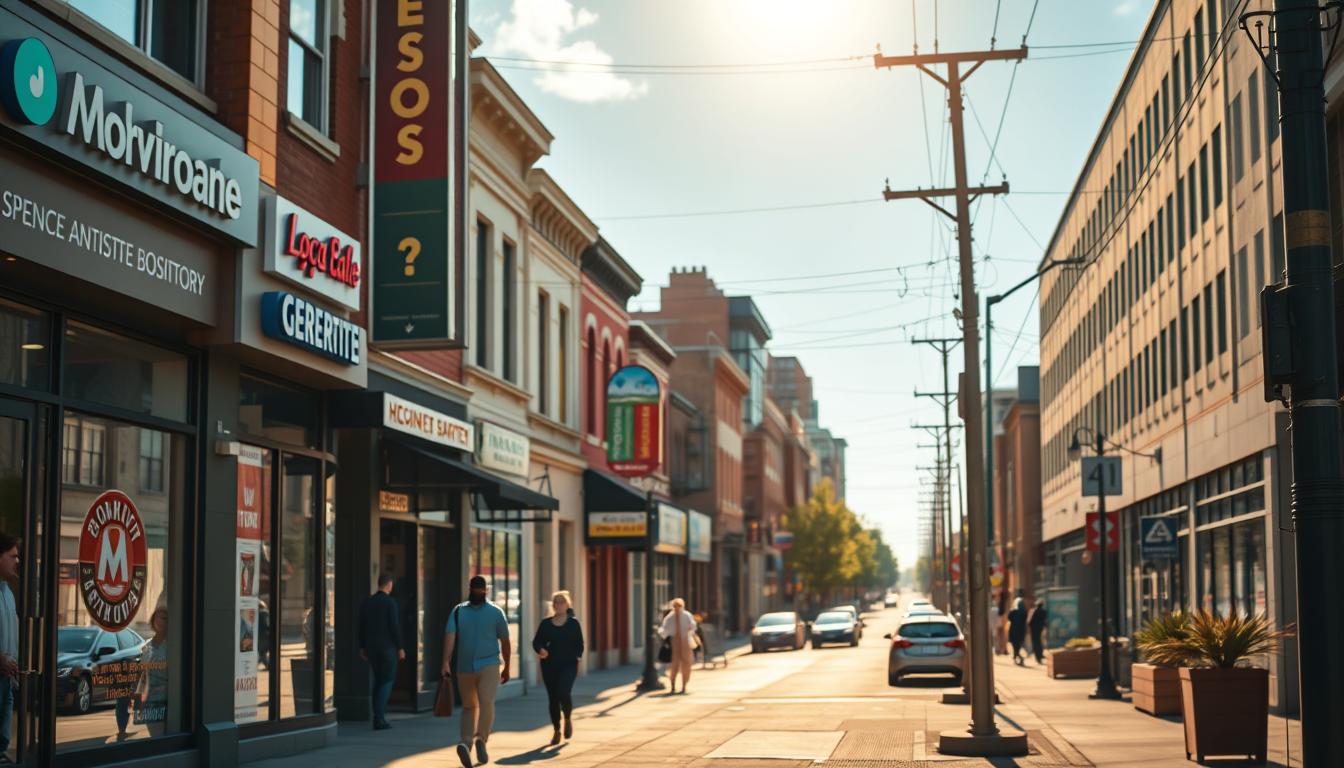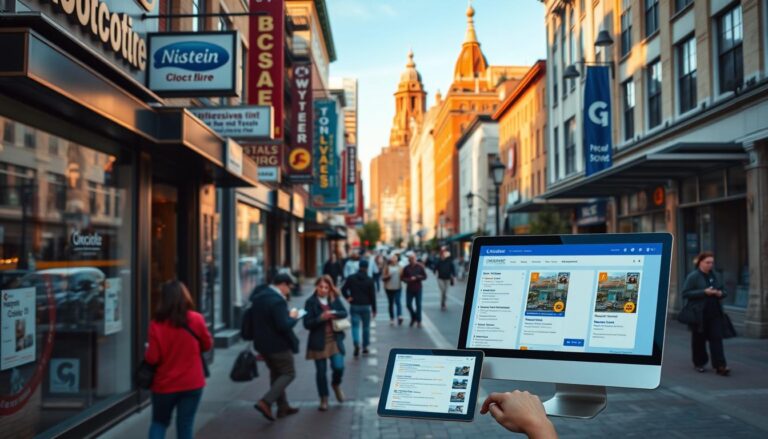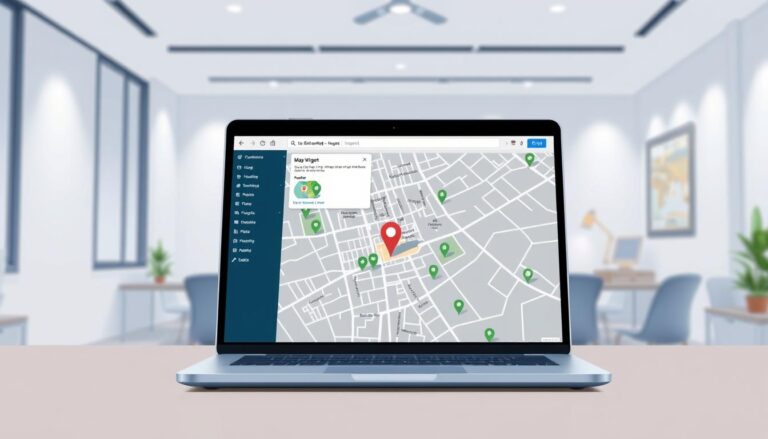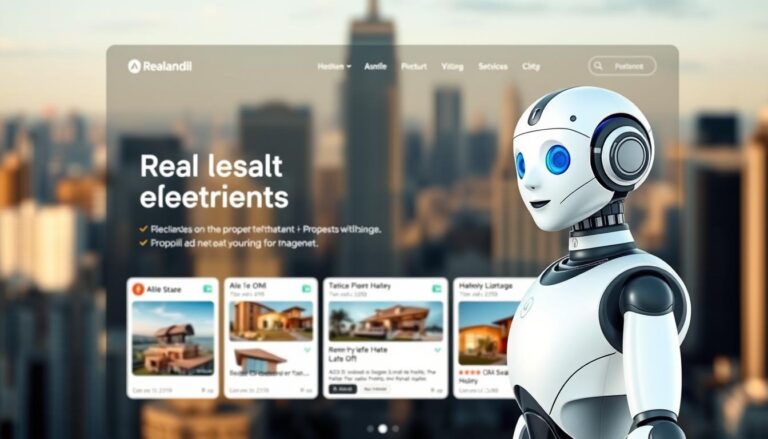As a professional SEO copywriter, I know how key it is to target local audiences. Local SEO is vital for businesses aiming to draw in customers from certain areas.
Creating content for specific neighborhoods boosts a business’s search visibility and brings in more targeted traffic. This method helps companies reach out to people looking for products or services in their area.
I’ll explain how focusing on specific neighborhoods can increase local search rankings and attract better leads. By making their online presence more visible for local searches, businesses can stay competitive.
Key Takeaways
- Neighborhood-specific content improves local search visibility.
- Targeted traffic is driven by location-based keywords.
- Local SEO is essential for geographic targeting.
- Optimizing for local searches enhances online presence.
- Businesses can attract more qualified leads through neighborhood-specific content.
The Power of Local Targeting in Digital Marketing
In today’s digital world, local targeting is key for businesses to reach their audience. By focusing on specific neighborhoods, they can make content that speaks to locals. This boosts conversions and strengthens their online presence.
Why Hyperlocal Marketing Matters Today
Hyperlocal marketing is vital as people search online for local goods and services more often. This strategy lets businesses tailor their marketing to their local community’s unique needs. It builds a stronger bond with their audience. By using hyperlocal marketing, businesses can stand out in local searches and attract more customers to their stores.
For example, a business can use local keywords to make their website easier to find. This targeted method boosts search rankings and makes content more relevant to locals.
The Gap Between City-Wide and Neighborhood-Level Content
City-wide content is broad but lacks the personal touch of neighborhood content. Neighborhood content is more engaging for local customers. It helps businesses connect deeply with their community.
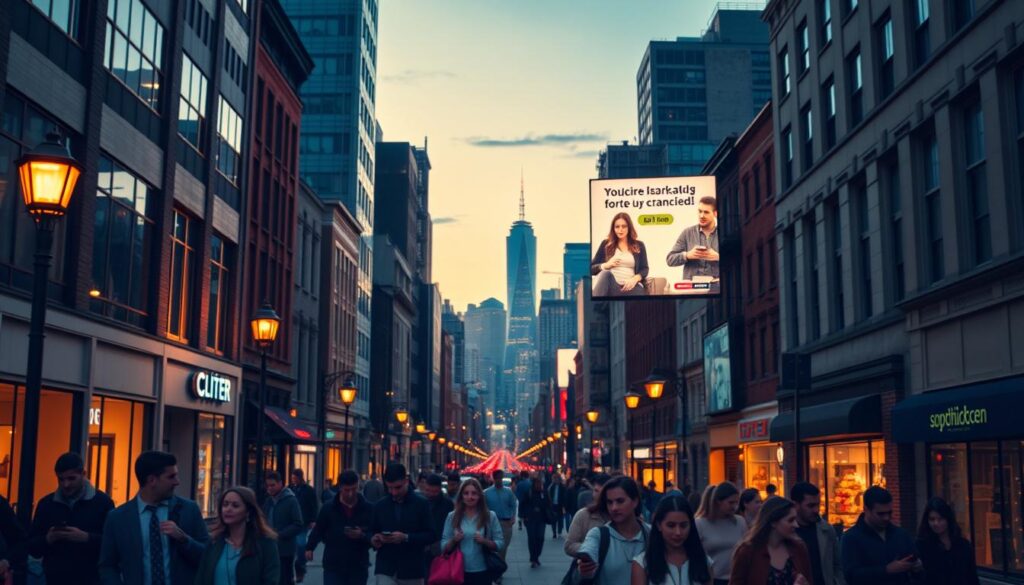
Neighborhood content meets local needs, making the experience more personal. This leads to better conversion rates and a loyal customer base.
What Are Neighborhood-Specific Landing Pages
Businesses are using neighborhood-specific landing pages to boost local search visibility. These pages focus on specific areas, drawing in more targeted traffic. This helps improve their online presence.
These pages are great for businesses in many locations or serving different neighborhoods. By making content for each area, businesses can become local experts. They build stronger ties with their audience.
Definition and Core Components
Neighborhood-specific landing pages are web pages for specific areas. They include location-specific content, relevant keywords, and locally-relevant design elements. These elements make the pages relevant to their audience, boosting local search visibility.
The components work together to improve local search visibility. For example, location-specific content shows search engines the page’s relevance to a certain area.
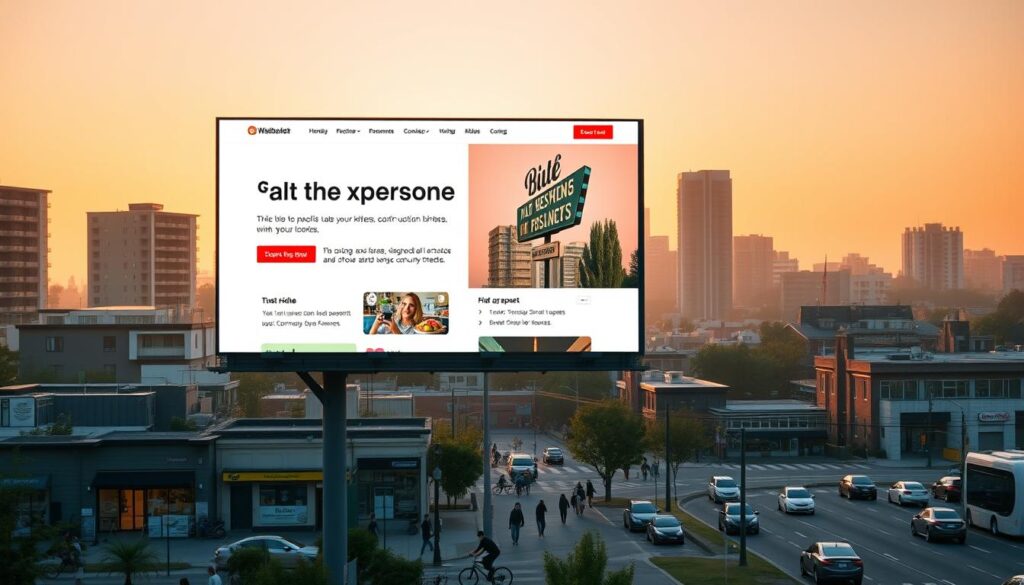
How They Differ from General Location Pages
Unlike general location pages, neighborhood-specific pages focus on specific areas. This makes content and marketing more effective. It increases the chance of attracting targeted traffic and converting visitors.
General location pages are broader, like cities or states. They lack the detail of neighborhood-specific pages. For example, a city page might not have the same neighborhood details as a specific landing page.
Real-World Examples of Successful Implementation
Many businesses have seen success with neighborhood-specific landing pages. For example, a real estate company might have separate pages for different neighborhoods. Each page has its own content and keywords.
A retail business might also use these pages for specific areas. This shows how neighborhood-specific pages can drive targeted traffic and improve conversion rates. By being relevant, businesses can become local authorities and connect better with customers.
Benefits of Neighborhood-Specific Landing Pages for Your Business
Neighborhood-specific landing pages are great for businesses wanting to boost their local online presence. They help improve search visibility, drive more targeted traffic, and increase conversions.
Improved Search Visibility for Local Queries
One key benefit is better search visibility for local queries. By using location-specific keywords and content, businesses can show up more in search results for users in their area.
This targeted approach attracts local customers who are more likely to buy. They’re searching for products or services near them.
Higher Conversion Rates from Targeted Traffic
Neighborhood-specific landing pages bring targeted traffic to a business’s site, leading to higher conversion rates. When users find a page that matches their search and location, they’re more likely to engage and take action.
This action could be buying something, filling out a form, or visiting the store. Targeting specific neighborhoods makes marketing more effective.
Building Community Trust and Relevance
Creating content for a specific neighborhood helps build trust and makes a business a local authority. This can lead to more loyal customers and positive word-of-mouth. Customers feel a stronger connection to the business.
Neighborhood-specific landing pages show a business understands the local community and its needs. This improves their reputation.
Competitive Edge in Saturated Markets
In competitive markets, neighborhood-specific landing pages give a business an edge. By focusing on specific areas, businesses can stand out from bigger, more general competitors. They establish a strong local presence.
This targeted approach helps businesses shine in a crowded market. They attract customers seeking a more personalized, local experience.
My Approach to Creating Effective Neighborhood Pages
As a professional SEO copywriter, I’ve learned how to make neighborhood-specific landing pages work well. These pages need to understand local details, how people behave, and what search engines look for.
I begin by doing deep neighborhood research and analysis. I look at demographics, trends, and what people like. I use data from census reports, surveys, and online reviews to get this information.
Conducting Neighborhood Research and Analysis
Knowing the local area is key for making good neighborhood content. I study the age, income, and lifestyle of the people there. This helps me know who I’m writing for and what they want to see.
Developing Authentic Local Content
With a good understanding of the area, I start making authentic local content. I write things that are interesting, useful, and fit the local vibe. I use local examples, events, and words to make it feel like it’s from the area.
Design Elements That Enhance Local Relevance
The design of neighborhood pages is also important. I add design elements like local pictures, maps, and graphics. These make the pages look good and feel right for the area. They help build trust with visitors.
Technical SEO Considerations for Neighborhood Pages
To make sure neighborhood pages show up in searches, I focus on technical SEO. I work on page speed, how it looks on mobile, and schema markup. I make the pages easy for search engines to find and understand.
Avoiding Common Pitfalls and Duplicate Content Issues
Lastly, I make sure to avoid common mistakes and duplicate content. I write unique content for each page and make sure it’s properly linked. This helps avoid problems with search rankings.
By using this detailed method, businesses can make effective neighborhood pages. These pages can help them do well online and reach more people locally.
Implementing Your Neighborhood Page Strategy for Maximum Impact
To make your neighborhood page strategy work best, focus on hyperlocal marketing. Also, make sure your pages offer a great user experience for those who visit.
Pay attention to page loading speed, how well your pages work on mobile, and clear calls-to-action. These steps help your neighborhood pages work better and attract more visitors.
It’s important to measure how well your pages are doing. Track things like page views, bounce rates, and conversion rates. This helps you improve your strategy and get the most out of your neighborhood pages.
By following these steps and keeping an eye on how well they work, businesses can grow over time. They can also stay ahead in their local markets.
